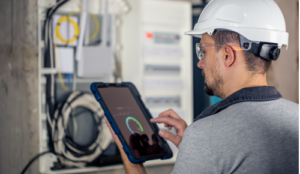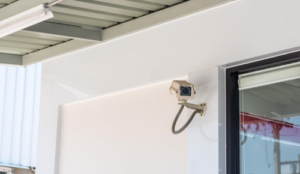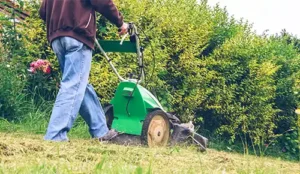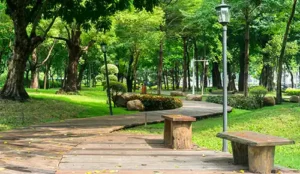Creating and maintaining shared spaces is about more than managing physical environments. It’s about fostering connections, collaboration, and a sense of community. Whether physical or virtual, these spaces serve as hubs for people to gather, interact, and build relationships, and their upkeep directly impacts how they are experienced and used.
Physical shared spaces, such as parks, libraries, co-working spaces, and community centres, benefit from intentional and thoughtful design elements like open seating, accessible layouts, and inviting aesthetics. These features encourage spontaneous interactions and collaboration. This article will explore how shared spaces can be enhanced through intentional and thoughtful grounds and property maintenance to support communities.
Ways to build community in shared spaces
Building a strong sense of community in shared spaces goes beyond just providing a place for people to gather. It’s about creating shared spaces that are consistently clean, functional and visually appealing environments that encourage interaction, collaboration, and a sense of belonging. Here are some ways to enhance the functionality and appeal of these spaces:
- Regular Maintenance and Cleanliness: Maintaining a clean, safe, and functional environment is important for a successful shared space. Regular cleaning and upkeep ensure that spaces are welcoming and inviting for all users. Cleanliness is key to fostering a positive experience, while also promoting the mental well-being of those who use the space.
- Thoughtful Design and Layout: The layout of shared spaces plays a huge role in facilitating interaction. Thoughtful design can encourage collaboration, conversation, and creativity. Arranging seating in clusters or circles, for example, can create opportunities for people to engage with each other more easily. Creating clear pathways and open areas allows people to move freely and comfortably, while also creating space for impromptu gatherings. Flexible layouts that can be adjusted for different activities or group sizes ensure that spaces remain dynamic and adaptable to community needs.
- Integration of technology: Technology can significantly improve the functionality of shared spaces, particularly when it comes to sustainability and user experience. Incorporating energy-efficient lighting, automated temperature control, and smart water management systems, helps to conserve resources and reduce costs. These small but impactful technologies not only make spaces more eco-friendly but also demonstrate a commitment to sustainability, which can strengthen community bonds as users feel they are part of a forward-thinking, responsible environment.
- Spaces for Social Interaction and Collaboration: Social spaces where people can grab a coffee or relax together can foster informal networking and friendships. Quiet areas also allow individuals to recharge when needed, supporting their mental well-being. Multi-use spaces that can transform for events, workshops, or informal meet-ups also help to activate the community, giving it a reason to come together regularly.
- Green Spaces and Nature: Access to nature or green spaces has been shown to improve mental health and well-being. Incorporating plants, trees, and outdoor seating areas into shared spaces creates a calming atmosphere and encourages people to spend time outdoors. Urban gardens, green walls, or rooftop gardens can not only enhance the aesthetic appeal of a space but also provide a venue for gardening, outdoor events, and community activities, all of which can bring people together.
- Hosting Community Events and Activities: Encouraging community engagement can be done through hosting events that are open to everyone who uses the space. This might include workshops, fitness classes, or social meetups. Events allow users to interact in a more structured way, deepening relationships and encouraging new connections.
Challenges in maintaining shared spaces
Maintaining shared spaces comes with unique challenges. High-traffic areas often experience quicker degradation due to wear and tear. It is important that these spaces remain safe, functional, and visually appealing, regardless of usage levels. Seasonal changes also bring specific maintenance needs, from clearing snow and gritting pathways in winter to implementing effective irrigation systems during dry summers. Shared spaces can sometimes lead to disagreements among users so to avoid conflicts, it is important to establish clear boundaries and rules, supported by thoughtful design and regular upkeep to create environments that minimise friction and enhance user experience.
Benefits of well maintained spaces for community building
Well-maintained shared spaces offer so much more than just a visually appealing environment, they play a crucial role in fostering a sense of community. Green, clean, and accessible spaces can significantly boost mental health by providing a calm and inviting atmosphere where people can relax, socialise, and connect. Beyond the immediate benefits, these spaces also contribute to healthier, more sustainable environments, positively impacting not just the local area, but the world at large. These thoughtfully maintained areas encourage interaction among neighbors, colleagues, and visitors, helping to create stronger, more connected communities. These spaces become hubs for collaboration, connection, and overall well-being, making them an invaluable asset for any community.
How can Dependable help?
At Dependable we specialise in property and grounds maintenance services, designed to enhance the functionality and appeal of shared spaces. Whether it’s residential or commercial, our soft and hard facilities management services ensure your space remains clean, safe, and welcoming for everyone. Get in touch today to learn more about how Dependable can help keep your property looking its best.




